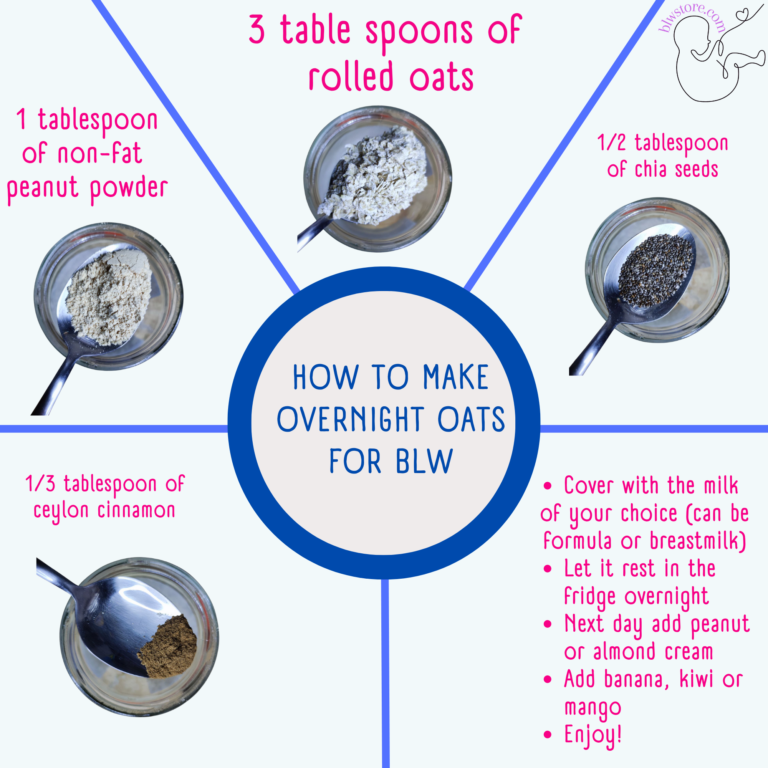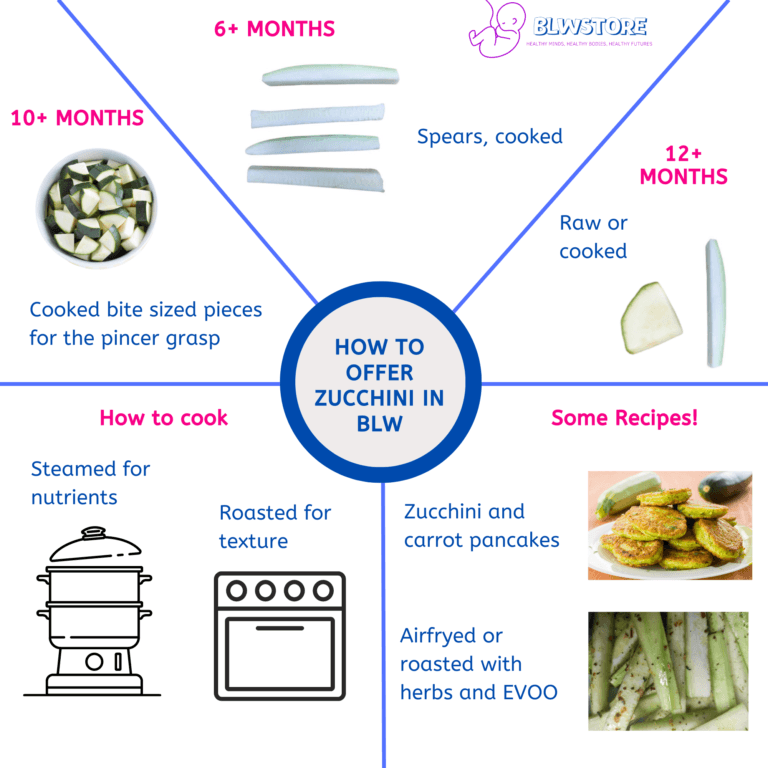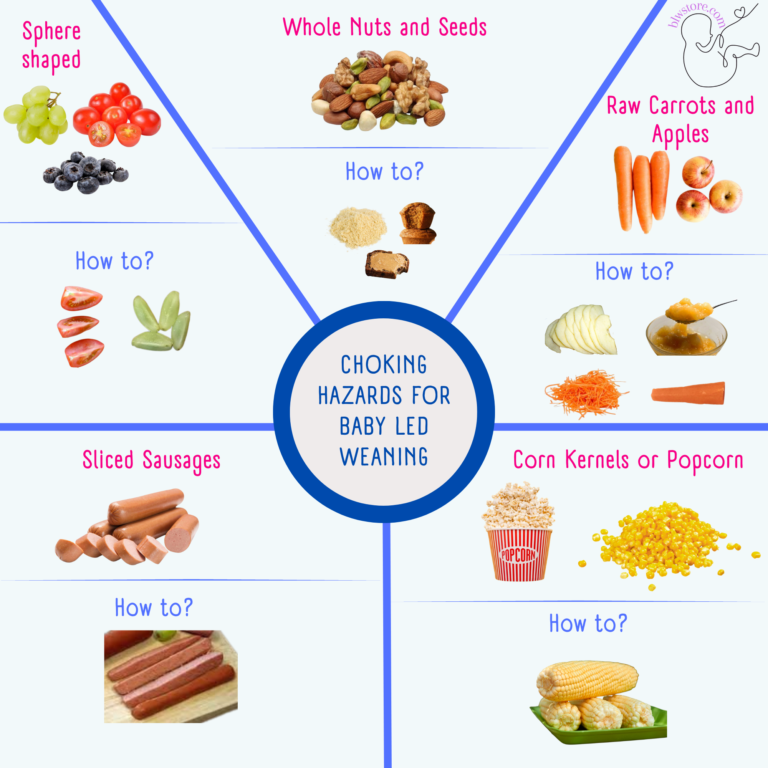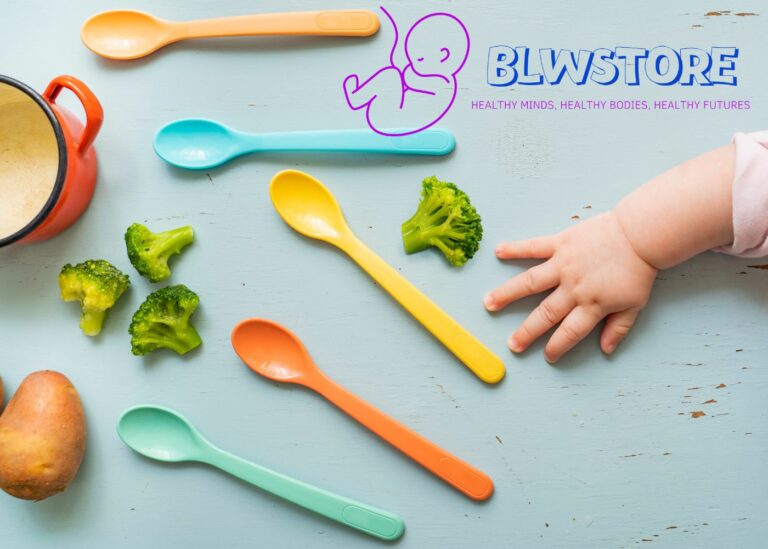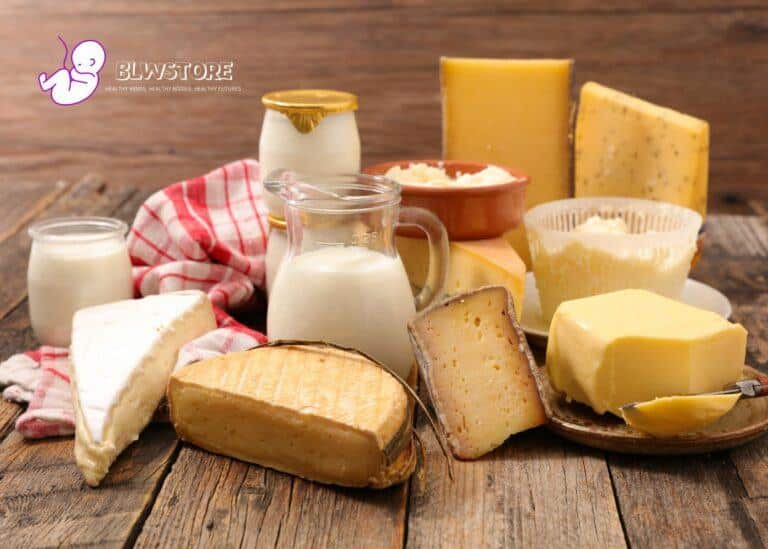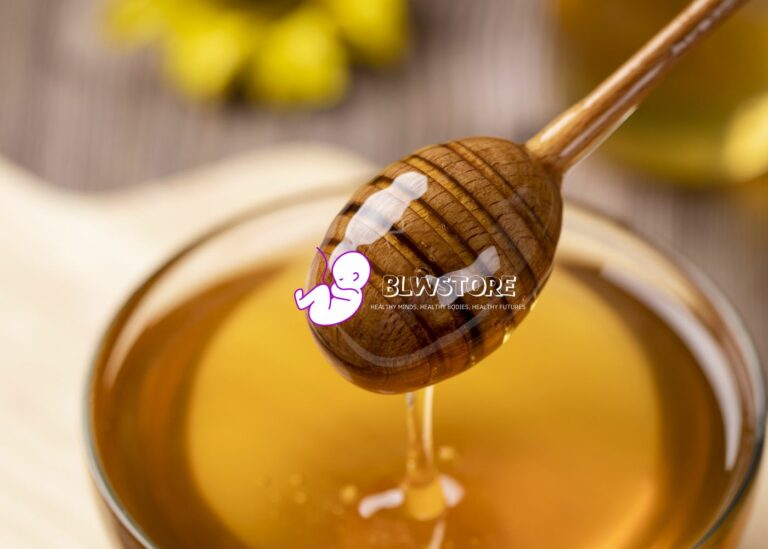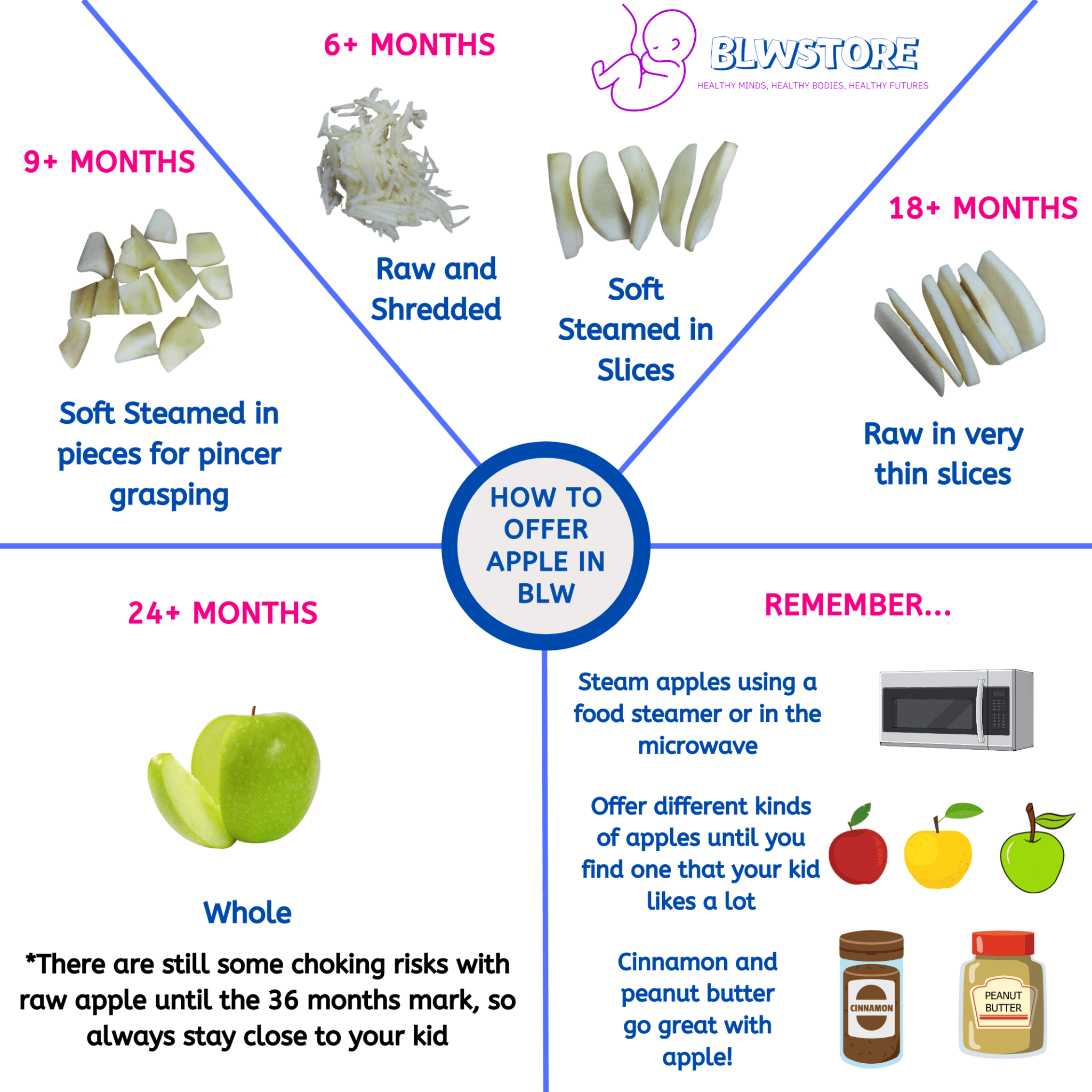
Apples are one of the best fruits to start Baby-Led Weaning; however, knowing how to prepare and offer them is crucial to avoid possible hazards. In the beginning, it’s essential to steam them so their texture is perfect for babies.
In this BLW Apple Guide, you will learn how to offer this great fruit to your baby, easy and healthy recipes, and extra tips to make your baby love them!
Key Takeaways
- You can introduce apples to your baby as early as six months old, but always take precautions to reduce choking risks.
- Apples are healthy for babies, providing fiber, vitamin C, vitamin B6, and antioxidants to support their growth and development.
- There is no single “most nutritive” apple variety; instead, it offers a range of apples to provide different nutrients and flavors.
- Raw apples and dried apple pieces can be a choking hazard for babies; serve cooked or thinly sliced apples to minimize this risk.
- Avoid giving apple juice to babies under 12 months old; whole apples are more nutritious and have less sugar.
- Gradually introduce age-appropriate apple servings to babies and toddlers, starting with cooked apple halves for 6-9 month-olds, and progressing to raw apple sections for 24+ month-olds.
- Always supervise your baby during meals and create a safe eating environment to minimize choking risks.
- Incorporate apples into your baby’s diet through various recipes, such as steamed apples with cinnamon, apple and banana purees, or baked apples with yogurt.
When can you introduce apples to your baby?
You can introduce apples to your baby as early as six months old.
However, taking precautions is essential to reduce the risk of choking.
Be sure to deseed and cut the fruit in an age-appropriate way, and for young babies, cook the apple until soft.
Are apples healthy for babies?
Apples are a fantastic food source for infants. They are rich in fiber, vitamin C, vitamin B6, and antioxidants, all of which support the health and development of a newborn.
Red apples include anthocyanins, an antioxidant that can benefit the gut microbiome and cardiovascular health.
Finding the “best” apple is not necessary. However, different types do have other nutrients.
Pesticides are frequently applied to apples, so always choose organic apples if possible.
Also, remember that you can use apples instead of other not-so-healthy ingredients like sugar.
For instance, you can make homemade applesauce by mashing cooked apples to replace processed sugar in stews and baked goods.
What is the most nutritive kind of apple?
There isn’t necessarily one “most nutritive” kind of apple.
Choosing a type their child enjoys is more critical than selecting the “most nutritive” option.
It’s also a good idea to vary the types of apples served to provide a range of nutrients and flavors.
| Variety | Flavor/Texture |
|---|---|
| Red Delicious | Sweet and juicy, with a thick skin |
| Granny Smith | Tart and crisp, with a thin skin |
| Gala | Sweet and slightly tart, with a crisp texture |
| Fuji | Sweet and firm, with a dense texture |
| Honeycrisp | Sweet and juicy, with a crisp texture |
| Golden Delicious | Sweet and mild, with a thin skin |
| Pink Lady | Tart and crisp, with a dense texture |
| Cripps Pink | Sweet and tangy, with a firm texture |
| Braeburn | Sweet and slightly tart, with a firm texture |
| Jonathan | Tart and juicy, with a dense texture |
Are apples a common choking hazard for babies?
Unfortunately, yes.
While apples are a nutritious food, raw apples and dried apple pieces can be challenging to chew and may be slippery, making them a common choking hazard for babies and children.
It is essential for parents to be aware of this risk and take steps to minimize it. Cooked apples or thinly sliced apples are safer options to reduce the risk of choking.
As always, creating a safe eating environment for your baby is crucial by supervising them closely during meals and ensuring they are seated upright in a high chair or booster seat.
Can babies drink apple juice?
Giving any juice to babies under 12 months old is not recommended.
Even after their first birthday, limiting the amount of juice they have is best to minimize sugar in their diet. Whole apples are more nutritious than juice because they contain fiber and vitamins.
If you give your baby juice after their first birthday, we recommend diluting it with water to reduce the amount of sugar.
Drinking sweet beverages regularly can increase the risk of obesity, diabetes, heart disease, and dental problems.
How to Serve Apple to Babies and Toddlers
6 to 9 months old baby
Steam apple halves with a baby food steamer or in a basket for babies until soft.
Then, let your baby munch on the cooked apple half. You may add some cinnamon, but we recommend doing so after your baby has tasted the natural flavor of the apple.
We do not recommend serving it raw yet; it is an unnecessary risk, but if you do, offer shredded apple.
9 to 18 months old baby
At this age, continue offering sections of cooked apple and consider serving raw apple rounds, about one centimeter thick, with or without the skin, but we recommend without it.
If you offer it with skin, encourage your baby to chew on the skin to develop their grinding and oral-motor skills.
The apple round is an excellent shape for children who tend to overstuff, as getting an entire round in the mouth is nearly impossible. If you’re worried, you may stick with cooked apples; there is no problem. We did that with Pablo until we felt he was ready.
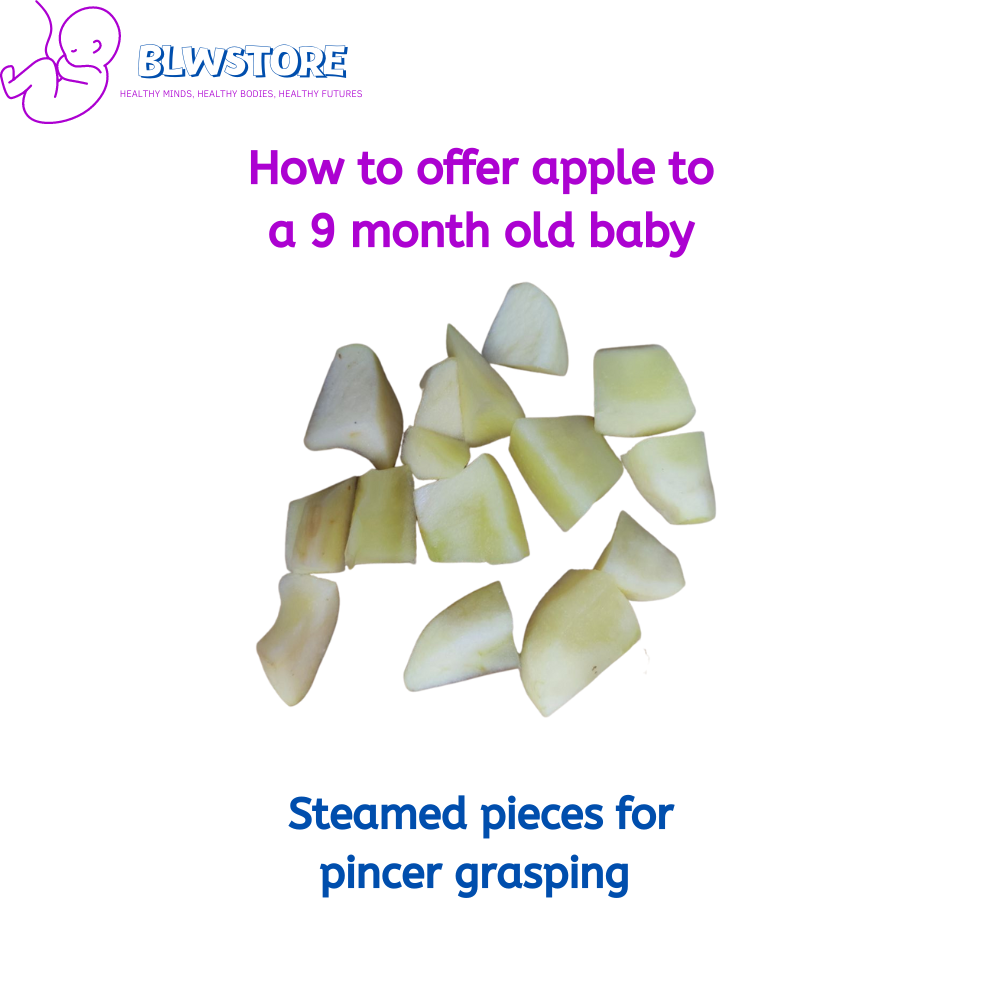
18 to 24 months old baby
When your toddler is ready, you can try offering whole apples, taking care to remove the core and seeds before serving.
Offering whole apples can be safer than sections of raw apples that break off more easily.
If your child is struggling with the skin, peel the apple or peel it in “stripes” so that some skin is left on for exposure.
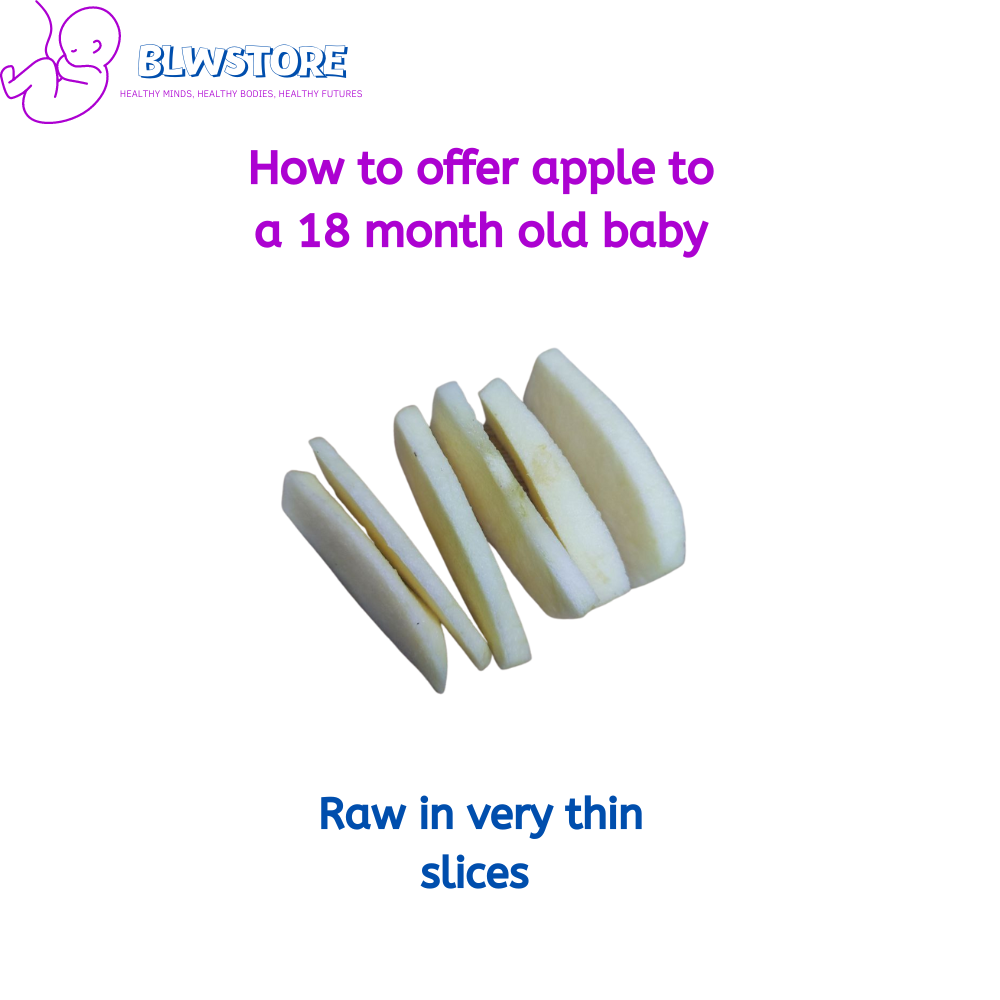
24+ months old baby
By age two, most typically developing toddlers will be ready for sections of raw apples, such as a quarter piece.
Just be close to your kid when you offer it like this.
We used to offer Pablo whole bites with skin while eating apples, so he could see how it was done.
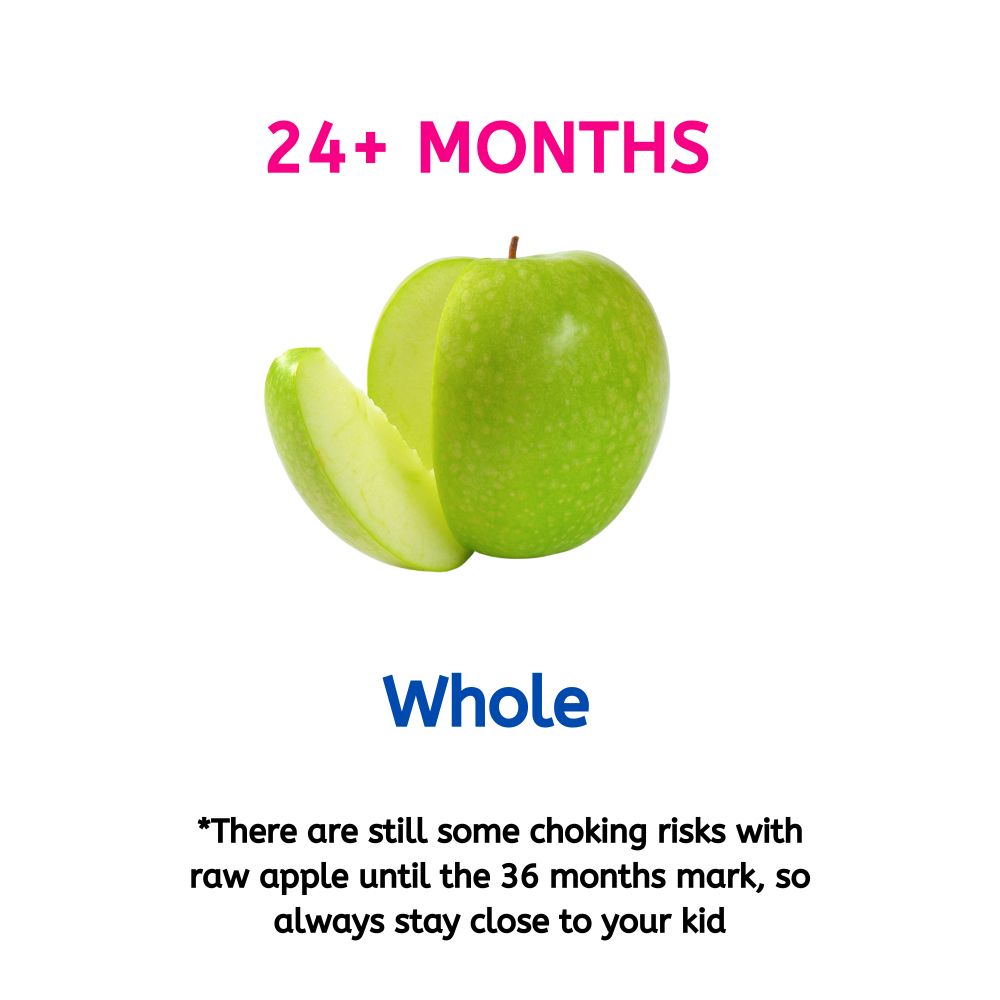
Apple recipes Easy Ideas for baby-led weaning
Apple and Banana Puree
Cut a peeled apple and a ripe banana into small pieces and steam until soft.
Puree until smooth and serve warm.
Add some chia seeds or cinnamon as well for extra flavour.
Baked Apple with Yogurt
Cut an apple into wedges and bake or steam until tender.
Serve with a dollop of plain yogurt for a nutritious and delicious snack.
Add some non-sugar cornflakes for some crunchiness.
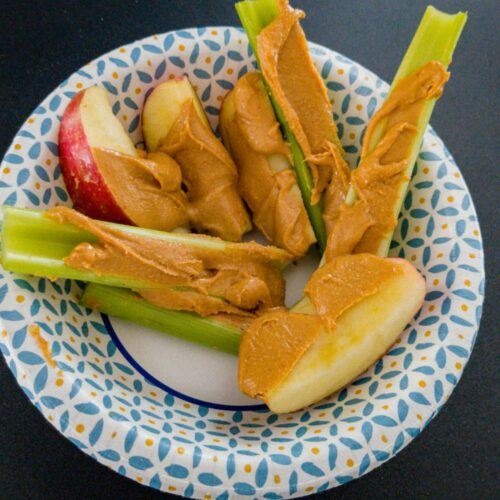
Microwave-Steamed Apple Slices with Cinnamon and Peanut Butter
Ingredients
- 1 apple sliced
- 1 tsp Ceylon Cinnamon
- 1 tbsp 100% Peanut Butter
Instructions
- Wash the apple and slice it into bite-sized pieces (you can peel it or not, depending on your baby's skills)
- Place the apple slices in a microwave-safe dish and sprinkle with cinnamon
- Cover the dish with a microwave-safe lid
- Microwave on high for 45 secs-1 min, or until the apples are soft and tender
- Remove the dish from the microwave and let it cool for 2 minutes
- Add a tablespoon of 100% peanut butter on top of the apple slices
- Serve and enjoy!
Notes
- If you prefer a smoother consistency, you can blend the peanut butter in a food processor or mix it with a little bit of water to make it more spreadable.
- You can use any type of apple for this recipe, but we recommend using a sweet variety like Gala or Honeycrisp.
- Make sure to use 100% peanut butter without any added sugars or oils to keep this recipe healthy and low in calories.
- Be careful when removing the apple from the microwave, as it may be really hot.
- We also like to add some raw celery with some peanut butter. Pablo loves it!
Apple for BLW FAQ
Can I give raw apple to my baby?
Sure, you may feed your baby raw apple so long as it is chopped appropriately, depending on your baby’s age. Follow this article’s advice. Make sure the seeds are removed to prevent choking.
To lessen the danger of choking in infants younger than one year, apples should be cooked until tender.
Can apple make my baby constipated?
Due to their high fiber content, apples might aid in a baby’s digestion.
To monitor how a new food affects your baby’s bowel movements, it is vital to introduce fresh foods gradually and in moderation.
Can babies eat apples with skin?
Infants can consume apples with skin. The skin is rich in nutrients and can aid in developing oral motor skills. Having said this, for young babies, apple skin might be difficult to manage, and removing it during the first months is recommended.
Ensure the apple is carefully washed to remove pesticide residue before offering it to your infant.
We’re Maria and Alberto, a married couple and educators who are nutrition enthusiasts. Even before we had kids, we were already crazy about nutrition.
We’d read scientific articles, watch videos from nutritionists, and spend hours listening to nutrition podcasts.
Today, we continue doing this, but in a different way, as we’ve learned to sift through the noise and trends. Nutrition, like any other field of knowledge, the more you read and learn, the more you develop a comprehensive understanding of reality, and that’s what has happened to us.
Before having our first child, we focused on learning everything we could about child nutrition, using the same techniques we had already employed, backed by our extensive knowledge in nutrition.
Our mission is to help other parents with their children’s nutrition, to help them become the best versions of themselves.
If we are what we eat and drink, which is absolutely true, let’s do it right!


